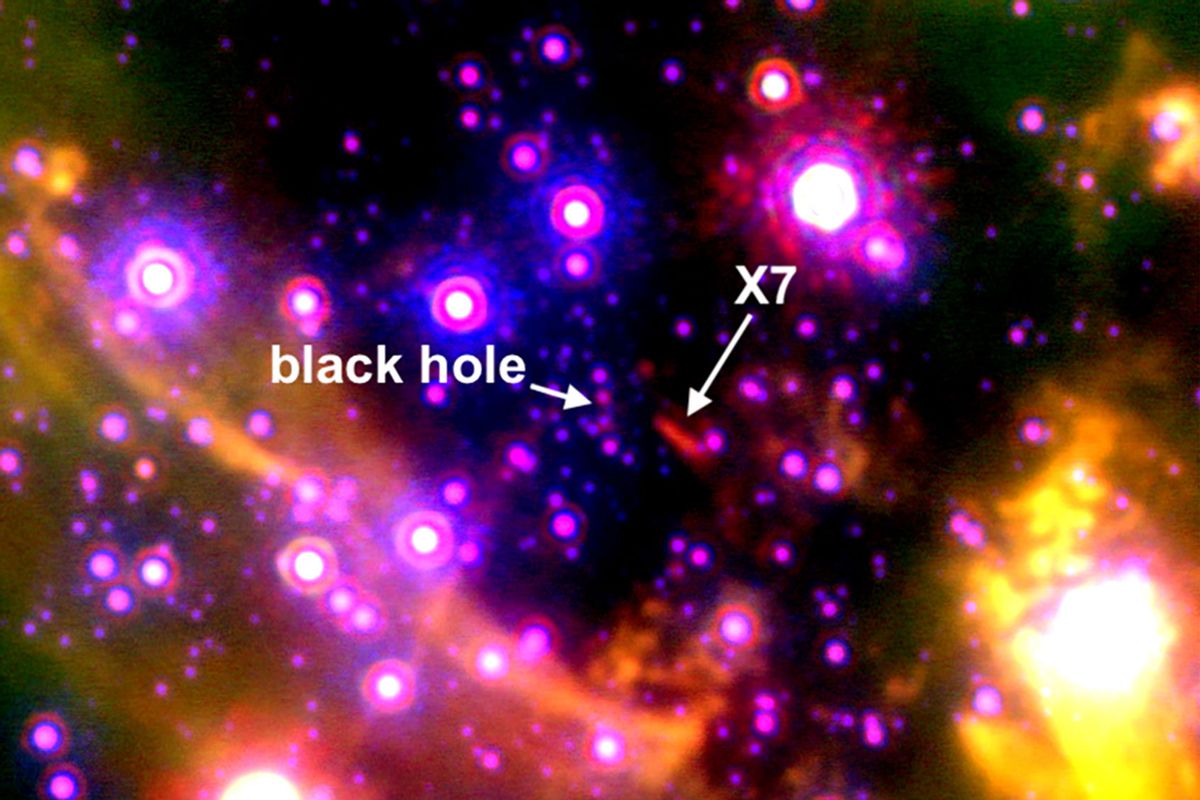Two decades ago, the W. M. Keck Observatory on top of Mauna Kea in Hawaii spotted a peculiar cloud-like object — now named X7 — in dangerous proximity to the supermassive black hole Sagittarius A*, which sits at the galactic center of the Milky Way. Objects like this that orbit close to black holes typically don't live long; their orbits tend to erode over time, as they are warped by intense tidal forces.
Hence, since the discovery of X7, the clock is ticking for astronomers to identify and study this mysterious object. Indeed, astronomers anticipate it will likely disintegrate in the next 15 to 20 years as it is dragged into the supermassive black hole around which our star system (and every object in the galaxy) orbits.
"This is our best chance at looking very close to the environment of a supermassive black hole in our own galaxy, so we're kind of obsessed about the center of the galaxy for this reason," Anna Ciurlo, an assistant researcher at University of California, Los Angeles, told Salon. "We don't know why there are so many young stars too close to a black hole where they should not be able to form, we don't know how the gas actually reaches the black hole and then gets fed to the black hole, so we are just obsessing about this region because there's so much physics you can learn from it."
X7 is a particular mystery because it is, unlike most of other objects close to the galactic center, not a star.
"The black hole actually has an influence on this pair of twin stars, and they can actually start getting close enough to each other that they start stripping material from one another."
According to a new study published in The Astrophysical Journal, astronomers now have a hypothesis they feel they can really get behind: X7 is a cloud of dust and gas that was created when two stars collided. Ciurlo said there are "several reasons" to support this theory.
"We know that there are a huge amount of stars [in that region] and we know that lots of stars are formed in pairs, and when stars form in pairs what happens is that they orbit each other and then they orbit the black hole," Ciurlo said. "And the presence of the black hole actually has an influence on this pair of twin stars, and they can actually start getting close enough to each other that they start stripping material from one another and then they eventually merge."
Want more health and science stories in your inbox? Subscribe to Salon's weekly newsletter The Vulgar Scientist.
This process is "messy," Ciurlo emphasized, but astronomers would expect to see objects like X7 as a result. However, Ciurlo stressed this is one possibility among several.
For a long time, X7's appearnce and velocity have stood out to astronomers. Initially, due to its comet-like shape, astronomers suspected it was the result of stellar winds or jets of particles that originated from the black hole. But as researchers took a closer look, they noticed that X7 became more elongated over time rather than more condensed — meaning the object is accelerating toward the black hole at speeds that are as high as 700 miles per second. In essence, our Milky Way's central black hole is stretching and pulling apart X7 as it is being dragged towards the black hole's center.
"Something must have put this cloud on its particular path with its particular orientation," Ciurlo said.
Astronomers estimate the object will disintegrate when it veers too close to the black hole around 2036.
Ciurlo emphasized to Salon that the idea that X7 is the result of two stars colliding is just one possible hypothesis. Yet it is one that astronomers like right now because "it fits with what we expect to see given what we know about what's going on in this region."
Still, Ciurlo notes there are other theories.
"Another possibility is that instead of coming from the construct of two twin stars that were formed together, this could be created when the two stars were not created together," Ciurlo said. "For example, you think about a red giant, these are very puffy stars, very big... [but] a black hole or star remnants or something could strip material out of it and then could create an object like X7."
Another theory is that X7 broke off from a larger structure nearby.
Ciurlo said it would be helpful to have hydrodynamic simulations, which would show what might be produced in the condition of emerging stars. But until then, astronomers will continue to study and speculate.
Unfortunately, there isn't much time left, as astronomers estimate the object will disintegrate when it veers too close to the black hole around 2036. But in the lead-up, studying X7 could truly lead to historic physics breakthroughs.
"This is a great opportunity to see the forces of the black hole act in real time — the way it's evolving right now. The way it's getting stretched is basically only dependent on the black hole forces, so we might be able to better understand the physical conditions near the black hole," Ciurlo said. "If we can understand how quickly the black hole is stripping it apart and what's happening. I think we can do some interesting calculations on the physical conditions of that region."



Shares